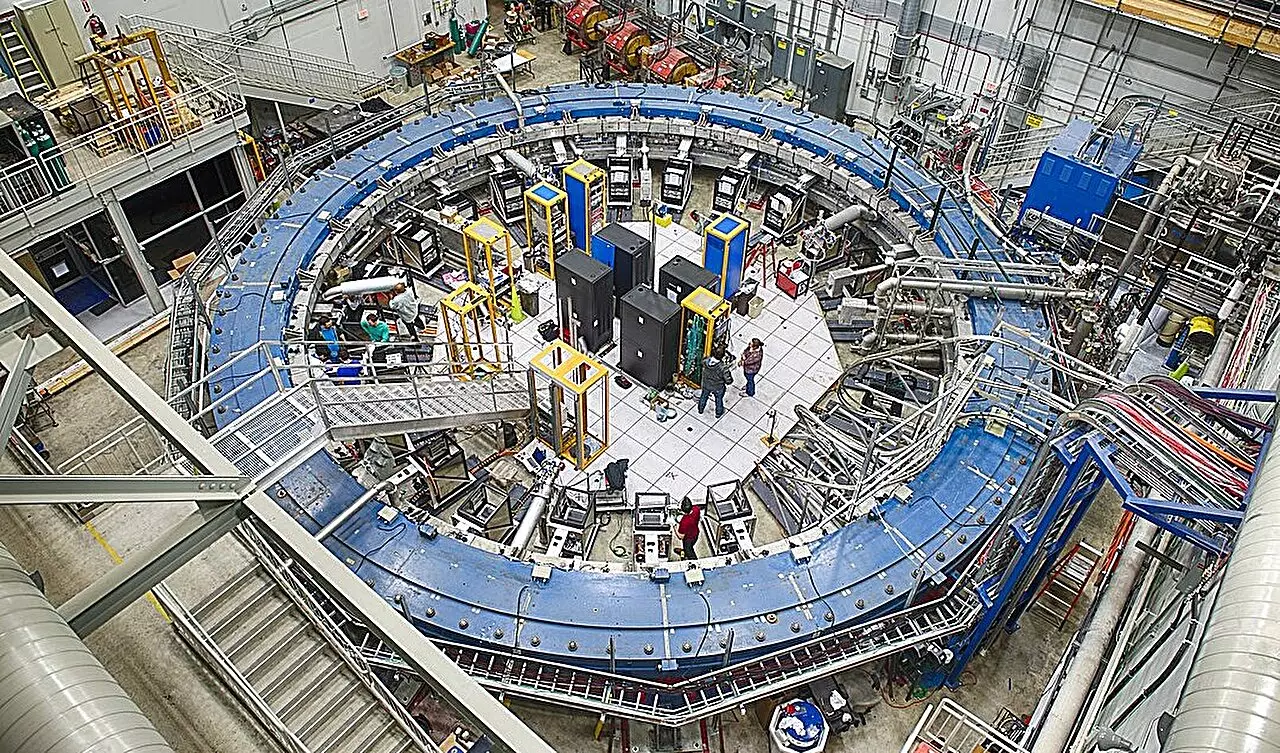The concept of magnetic moment in particles is a fundamental aspect of physics, alongside mass and electric charge. This intrinsic property arises from the interaction between a particle with spin and a magnetic field, providing valuable insights into the behavior of subatomic particles. When examining the magnetic moment of a muon, a particle analogous to the electron, intriguing differences emerge between theoretical predictions and experimental measurements carried out in high-energy settings.
The discrepancy between the theoretical value of the muon’s magnetic moment, calculated as 2 in the Dirac equation, and the experimental value obtained in particle accelerators raises important questions in the realm of particle physics. The experimental measurement of the muon’s magnetic moment, denoted as g-2, currently stands at 2.00116592059, with a remarkably low uncertainty range. This variation from the theoretical prediction presents an opportunity to explore the interactions of muons with exotic particles such as dark matter and new Higgs bosons or to uncover potential unknown forces at play within the subatomic realm.
A recent study conducted by physicist Diogo Boito and his collaborators delves into the discrepancies surrounding the muon’s magnetic moment, shedding light on the origins of the disparity between experimental and theoretical values. By analyzing the two methods utilized to determine the fundamental component of g-2, insights were gained into the divergent results obtained from experimental data and quantum chromodynamics simulations. This disparity poses a significant challenge in probing the contributions of exotic particles to the muon’s magnetic moment, necessitating a deeper understanding to unlock new physics phenomena.
Muons, belonging to the lepton class of particles, exhibit unique characteristics due to their increased mass compared to electrons. In the presence of a magnetic field, muons undergo decay processes, transforming into a cloud of various particles, including electrons, positrons, and bosons. These intricate interactions give rise to a measured magnetic moment exceeding the theoretical prediction of 2, necessitating a comprehensive evaluation of all contributing factors to elucidate the g-2 differential.
The study of quantum chromodynamics plays a crucial role in deciphering the muon’s magnetic moment, as it unveils the complexities of strong interactions between quarks. By combining experimental data from electron-positron collisions and lattice QCD simulations, researchers aim to reconcile the discrepancies in g-2 predictions. The utilization of connected Feynman diagrams in intermediate energy windows provides novel insights into the source of the discrepancies and guides the search for potential solutions to resolve the puzzle.
The collaborative efforts of physicists worldwide, such as those spearheaded by Diogo Boito and his team, highlight the importance of interdisciplinary research in unraveling complex scientific phenomena. By integrating theoretical frameworks with experimental data, researchers strive to harmonize the discrepancies in the muon’s magnetic moment and pave the way for groundbreaking discoveries in particle physics. The ongoing pursuit of understanding the mysteries of the muon’s magnetic moment underscores the relentless quest for knowledge and the boundless potential of scientific exploration.
Through meticulous analyses and innovative methodologies, the scientific community continues to unveil the intricate secrets of the subatomic world, offering a glimpse into the profound complexities of nature’s fundamental building blocks.


Leave a Reply